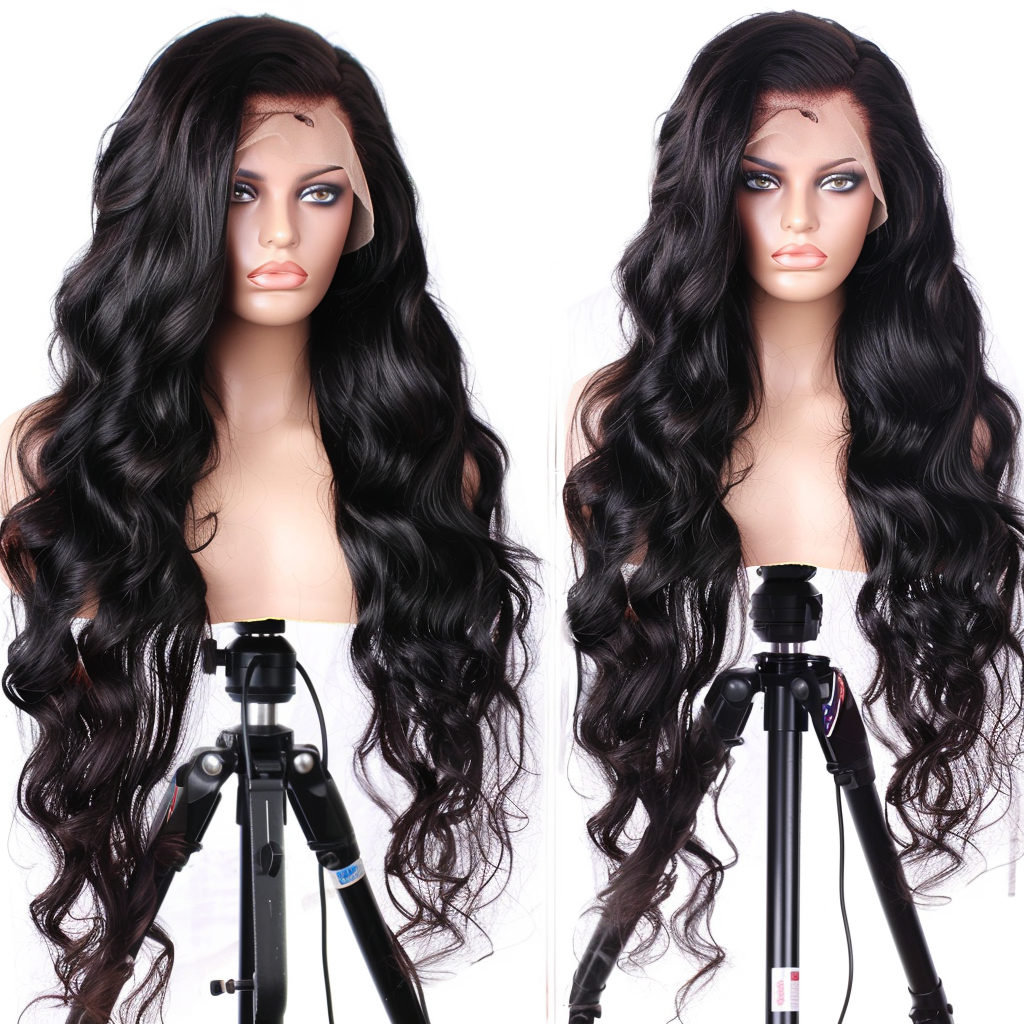In the realm of wig attachments, the battle between wig glue and other attachment methods rages on. It\’s a topic that has sparked curious minds and divided opinions. But fear not, for this article aims to shed light on the pros and cons of wig glue, giving you a comprehensive understanding of its benefits and drawbacks, as compared to other attachment methods. Whether you\’re a wig enthusiast searching for a foolproof way to secure your wig or simply someone intrigued by the world of wig enhancements, this article will navigate you through the intricacies of wig glue and beyond. Get ready to explore the captivating tapestry of wig attachments and discover which method reigns supreme.

Wig Glue
Wig glue is a specialized adhesive product that is used to attach wigs securely to the scalp, providing a natural and seamless look. It is a popular choice among wig wearers for its ability to create a long-lasting hold and prevent the wig from shifting or falling off. Wig glue offers a strong bond and is often used by professionals in the entertainment industry to ensure that wigs stay in place, even during vigorous activities such as dancing or performing on stage.
Advantages of Wig Glue
One of the main advantages of using wig glue is its ability to provide a secure and long-lasting hold. Unlike other attachment methods that may require frequent readjustments, wig glue creates a strong bond that can last for days or even weeks. This allows wig wearers to enjoy a worry-free experience without constantly checking and fixing their wig.
Another advantage of wig glue is its versatility with different hairstyles. With wig glue, you can achieve various looks, from sleek updos to intricate braids, without worrying about the wig shifting or coming loose. The strong hold provided by the glue ensures that your hairstyle stays in place, even during active movements.
Furthermore, wig glue offers a more natural and seamless look. When applied correctly, wig glue creates an invisible bond between the scalp and the wig, giving the illusion that the hair is growing directly from your scalp. This makes it an ideal choice for those who want to achieve a flawless and undetectable appearance.
Disadvantages of Wig Glue
While wig glue offers numerous advantages, it also comes with a few downsides. One of the main disadvantages is the potential for damage to natural hair. The glue can be harsh on the hair and scalp, especially if not applied or removed properly. Care must be taken to minimize the risk of hair breakage or scalp irritation when using wig glue.
Another disadvantage is the required maintenance and removal process. Wig glue needs to be removed carefully and thoroughly to avoid any damage to the wig or natural hair. This can be time-consuming and may require the use of specialized wig adhesive removers or solvents. Additionally, frequent use of wig glue can cause buildup on the scalp, which may need to be addressed with proper cleansing routines.
Types of Wig Glue
There are different types of wig glue available to cater to individual preferences and needs. Some popular options include water-based wig glue, silicone-based wig glue, and adhesive tapes. Water-based wig glue is often gentle and easy to remove, making it a suitable choice for those with sensitive skin. Silicone-based wig glue, on the other hand, offers a stronger and longer-lasting hold. Adhesive tapes are an alternative option that provide a secure attachment without the need for glue. It is important to consider factors such as skin sensitivity, durability, and ease of removal when choosing the right type of wig glue.
How to Use Wig Glue Properly
Proper application of wig glue is crucial to ensure a secure and comfortable hold. Before applying the glue, make sure that your scalp and hair are clean and free from any oils or products. Apply a thin layer of glue along your hairline, using a small brush or sponge applicator for more precise application. Allow the glue to dry partially, becoming tacky, before carefully placing the wig onto the glued area. Gently press the wig down with your fingers or a comb to secure it in place. Once the wig is properly attached, you can style it according to your preference. To remove the wig, apply a wig adhesive remover or solvent along the hairline and gently lift the edges of the wig, gradually releasing it from the scalp.

Other Attachment Methods
While wig glue is widely used and highly effective, it is not the only option when it comes to attaching wigs. There are several alternative methods to consider, each with its own advantages and limitations. Let\’s explore some of these attachment methods:
1. Wig Tape
Wig tape is a popular alternative to wig glue, offering a strong and secure hold. It is usually double-sided and comes in various widths and lengths to accommodate different wig styles and needs. To use wig tape, simply cut the desired length, peel off the protective backing, and apply it along the hairline or the desired attachment area. Press the wig onto the tape, making sure it is securely positioned. Wig tape provides a firm hold and is a convenient option for those who prefer a temporary attachment method.
2. Wig Clips
Wig clips are another common attachment method that offers flexibility and ease of use. These small comb-like clips are sewn onto the inside of the wig cap and can be clipped onto your natural hair, providing a secure hold. Wig clips allow for easier adjustments and removal of the wig while providing a stable attachment. They are particularly useful for individuals with shorter or finer hair, as they add extra grip and prevent the wig from slipping.
3. Wig Combs
Wig combs are similar to wig clips in their functionality but differ in design. Instead of the comb-like structure, wig combs are small, rectangular-shaped attachments sewn onto the inside of the wig cap. They have small, tooth-like prongs that can be inserted into your natural hair or through the wig cap for a secure grip. Wig combs are advantageous as they provide stability and prevent the wig from shifting, especially in the front hairline and crown areas.
4. Hair Pins
Hair pins are a traditional and versatile attachment method that can be used to secure wigs in place. They are ideal for individuals who prefer a more temporary attachment method or who want the option to remove the wig easily. Hair pins can be inserted through the wig cap and into your natural hair, creating a stable hold. They can also be strategically placed to provide added support and prevent the wig from slipping.

5. Hair Extensions
Hair extensions offer a unique attachment method that involves blending your natural hair with the wig. This method requires the use of hair wefts or individual hair strands, which are attached to your natural hair through various techniques such as sewing, bonding, or braiding. Once the extensions are applied, the wig can be securely attached to the extensions, creating a seamless and integrated look. Hair extensions provide added volume and length to the natural hair while ensuring a stable and secure attachment for the wig.
6. Sewing the Wig
Sewing the wig onto a wig cap is a traditional and widely used attachment method. This method involves stitching the wig onto a fitted wig cap or weaving the wig into your natural hair with a needle and thread. Sewing ensures a secure fit and allows for more versatility in styling. It is a durable attachment method that can withstand various activities and provides long-lasting wear. However, sewing the wig may require assistance and can be time-consuming.
7. Wig Grip Band
A wig grip band is a soft, adjustable headband that helps to secure the wig in place. It is worn underneath the wig and acts as a barrier between the scalp and the wig, preventing slipping and adding comfort. Wig grip bands are particularly beneficial for individuals with alopecia or sensitive skin, as they provide a gentle way to keep the wig in place without the need for adhesives or clips.
8. Elastic Bands
Elastic bands are often used in combination with other attachment methods to provide additional support and stability. They can be sewn onto the wig cap or secured around the perimeter of the wig, creating a tighter and more secure fit. Elastic bands are especially useful for individuals with larger or smaller head sizes, as they allow for a customized and snug fit.
9. Velcro Strips
Velcro strips offer a convenient and adjustable method for attaching wigs. These strips consist of opposing hook and loop fasteners that can be sewn onto the wig cap or attached to the inner lining of the wig. Velcro strips provide a secure hold and allow for easy removal and readjustment of the wig. They are particularly popular among individuals who prefer a quick and hassle-free attachment method.
10. Wig Glue Alternatives
In addition to the aforementioned attachment methods, there are also alternative adhesive products available that can be used instead of traditional wig glue. Some of these alternatives include wig adhesive sprays, bonding gels, and wig adhesives in powder or cream form. Each alternative offers its own unique benefits and may be preferred by individuals with specific needs or preferences.
Comparing Wig Glue and Other Attachment Methods
Now that we have explored the various attachment methods available, let\’s compare wig glue with these alternatives in terms of several key factors:
1. Hold and Security
When it comes to hold and security, wig glue and adhesive tapes are generally considered to be the most reliable options. They provide a strong bond that keeps the wig securely in place for extended periods. Wig combs, clips, hair pins, and hair extensions offer a secure hold, but they may not be as long-lasting as glue or tape. Sewing the wig and using a wig grip band also offer stability and security, although they may not provide the same level of hold as glue or tape. Velcro strips and elastic bands can provide a secure attachment, but they may be more adjustable and may require readjustments over time.
2. Comfort and Ease of Wear
In terms of comfort, wig glue and adhesive tapes are generally lightweight and provide a natural feel when properly applied. Wig combs, clips, and hair pins can be comfortable if placed strategically, although they may cause some discomfort or pressure points if not positioned correctly. Hair extensions, sewing, wig grip bands, and elastic bands can offer a comfortable fit, but they may take some getting used to initially. Velcro strips may be less comfortable for some individuals, as they can create friction against the scalp.
3. Damage to Natural Hair
Wig glue, adhesive tapes, and wig combs have the potential to cause damage to natural hair if not used or removed properly. They may lead to hair breakage or traction alopecia if excessive force is applied during removal. Hair pins, hair extensions, and sewing can also cause damage if not applied or removed carefully. Wig clips, wig grip bands, elastic bands, and Velcro strips are generally considered to be less damaging to natural hair, as they do not involve the same level of adhesion or tension.
4. Duration of Attachment
Wig glue, adhesive tapes, and sewn attachments typically offer the longest duration of attachment, lasting for several days to weeks. Hair pins and hair extensions may require more frequent adjustments or reattachment due to their temporary nature. Wig combs, clips, wig grip bands, elastic bands, and Velcro strips can provide a secure attachment if properly positioned, but they may require periodic readjustments.
5. Versatility with Hairstyles
Wig glue, adhesive tapes, wig combs, hair pins, hair extensions, and sewing offer versatility in terms of hairstyling. These attachment methods allow for various hairstyles and can withstand movement and activity without compromising the wig\’s integrity. Wig clips, wig grip bands, elastic bands, and Velcro strips may limit some hairstyle options due to their positioning or bulkiness.
6. Allergies and Sensitivities
Individuals with allergies or sensitivities may need to consider the materials used in the attachment methods. Wig glue, adhesive tapes, and wig adhesives may contain ingredients that can cause skin reactions in some individuals. Those with sensitive skin may opt for water-based wig glue or alternative attachment methods like wig clips, combs, hair pins, hair extensions, or sewing, as they do not involve direct contact with adhesive substances.
7. Cost of Attachment
The cost of attachment methods can vary depending on the specific products used and their quality. Wig glue, adhesive tapes, and specialized wig adhesives may require frequent repurchases, adding to the overall cost. Wig clips, wig combs, hair pins, elastic bands, and Velcro strips provide a more affordable and reusable option, as they can be used multiple times without additional expenses. Hair extensions and sewing may involve additional costs for the initial application but can be considered a long-term investment.
8. Maintenance and Removal
Wig glue and adhesive tapes generally require the most maintenance and effort for removal. Specialized removers or solvents may be necessary to dissolve the adhesive and safely remove the wig. Wig combs, clips, hair pins, and Velcro strips can be easily removed by simply unclipping or detaching them from the natural hair or wig cap. Hair extensions and sewing require regular maintenance and occasional tightening or repositioning. Wig grip bands and elastic bands may need occasional washing or replacement to maintain their effectiveness.

9. Reusability and Longevity
Wig glue, adhesive tapes, wig combs, and hair pins may require replenishment or replacement with frequent use. Hair extensions and sewing can be considered more long-term options, as they involve the integration of the wig with the natural hair. Wig clips, wig grip bands, elastic bands, and Velcro strips can be reused multiple times, offering a more cost-effective and sustainable choice.
10. Personal Preference
Ultimately, the choice of attachment method comes down to personal preference. Each method has its own advantages and limitations, and what works best for one individual may not be as suitable for another. Factors to consider include desired hold, comfort, convenience, hair type, skin sensitivity, styling versatility, and budget. It may be necessary to try out different attachment methods to determine the most suitable option for your specific needs and preferences.
Click to buy: Textured Kinky U-Part Wig
Conclusion
In conclusion, choosing the right attachment method for your wig is essential to achieve a secure and comfortable fit. Wig glue is a popular choice known for its strong hold and natural appearance, but it is important to consider the potential for damage to the natural hair and the required maintenance and removal process. Alternative methods such as wig tape, wig clips, wig combs, hair pins, hair extensions, sewing, wig grip bands, elastic bands, Velcro strips, and wig glue alternatives offer various advantages and may be preferred based on individual preferences and needs.
By understanding the pros and cons of each attachment method, you can make an informed decision that ensures a reliable and enjoyable wig-wearing experience. Whether you prioritize hold and security, comfort and ease of wear, damage to natural hair, duration of attachment, versatility with hairstyles, allergies and sensitivities, cost of attachment, maintenance and removal, reusability and longevity, or personal preference, there is an attachment method that will suit your needs and help you rock your wig with confidence.


